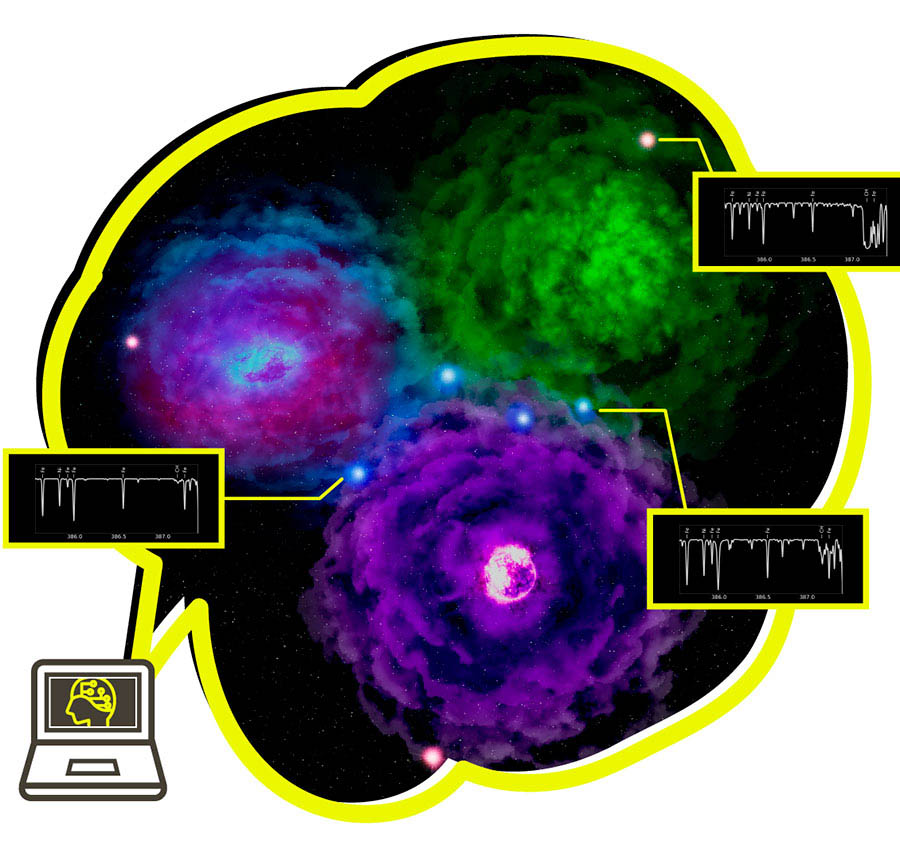AI’s Hunt for the First Stars
Once upon a time, dinosaurs roamed our planet Earth – and even though we never met one, the fossils tell us their story. With the help of artificial intelligence (AI), an international team of astronomers have found the “fossils” of the very first stars in the Universe! They discovered that the first stars were not alone: they were clustered in groups.

After the Big Bang, our Universe mainly consisted of the elements Hydrogen, Helium and Lithium. Most of the other elements were made in the interior of stars. Some elements also form when a star explodes into a supernova. Astronomers have been searching for the first generation of stars – the first to produce elements heavier than lithium. It is very challenging as researchers think that all the first stars have already exploded into supernovae, so we can’t find any.
So, how can we know more about ancient stars that are already gone? Studying the first generation of supernovae and its chemical footprints on the next generation of stars. Like finding out one’s ancestors by looking at their DNA. Researchers think the extremely metal-poor (XMP) stars could be the first set of stars formed after the first round of supernovae based on their chemical composition. And so, using AI, the researchers began studying a group of 450 XMPs – and they found something unexpected!
Not only did the XMPs show evidence of chemical footprints of its parent supernovae, but a single star also contained a mix of footprints of multiple supernovae. This means that ancient stars exploded near each other. In other words, the first stars in the Universe formed in groups instead of being alone!
The team of researchers plans to use this AI-powered program to ‘excavate’ many more ancient stars from future observations.
Cool Fact:
Did you know! The oldest known star is called the Methuselah star. It is located in the constellation Libra, and it is visible with binoculars! As expected, the Methuselah star is extremely poor in metals, and it is thought to have formed shortly after the Big Bang.
This Space Scoop is based on a Press Release from NAOJ.
Source: Space Scoop
🇵🇹 Versão portuguesa disponível neste site


Leave a Reply